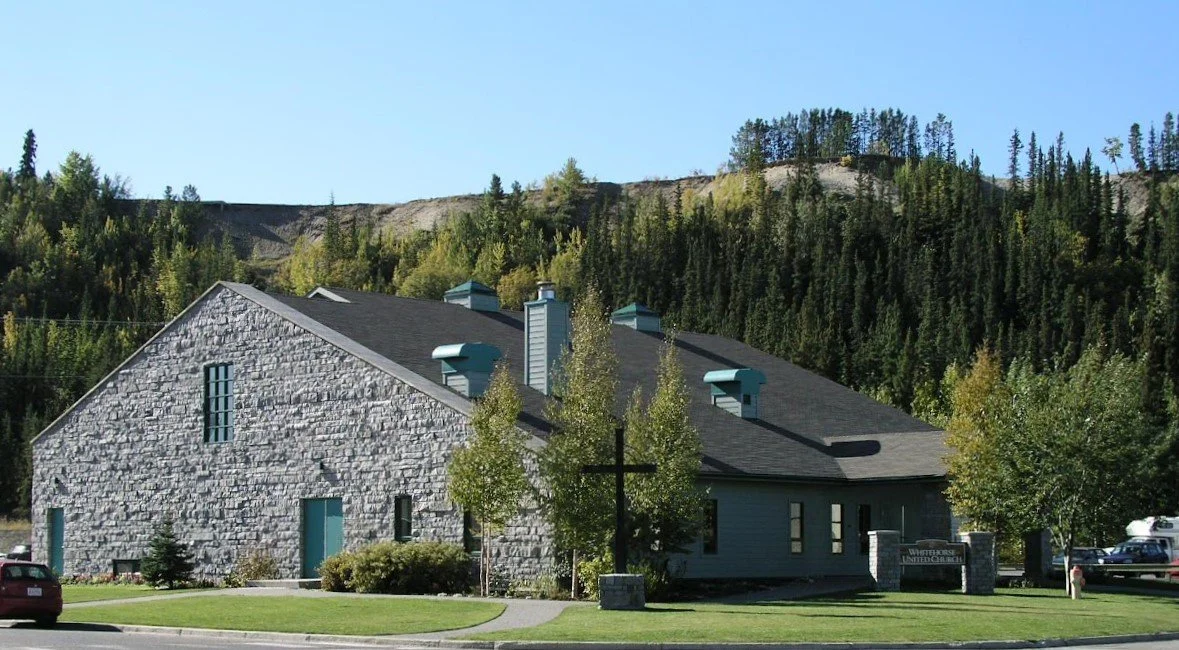Energy upgrades and building projects can significantly reduce energy consumption and carbon emissions, but sometimes the most innovative approaches aren’t obvious. Conducting a comprehensive energy study and building assessment can reveal new opportunities and strategies to improve efficiency that may not have been previously considered. At Whitehorse United Church in Whitehorse, Yukon, this approach led directly to the congregation’s largest energy project to date, a full HVAC upgrade incorporating air source heat pump (ASHP) technology.
Rebuilt in 1993–1994 after a devastating fire, its building was constructed to above-code efficiency standards, including R28 walls, temperature-controlled cycling block heater outlets, and T8 fluorescent lighting. For the past decade or so, the congregation has continued to undergo a handful of energy saving upgrades to lower both consumption and operating costs, as well as intentional routine maintenance and repairs.
Projects have included:
2012 – Installed LED sanctuary lighting.
2015 – Renovated the kitchen with LED lighting and Energy Star–rated appliances.
2016 – Commissioned a study from a local engineering firm to explore alternatives to the oil heating system, identifying HVAC upgrades that could reduce oil use.
2017 – Further studied non-fossil fuel heating options before replacing the underground oil tank with an above-ground storage system.
2018 – During a roof replacement, upgraded insulation from R40 to R68.
2018–present – Tested and adopted various LED lighting alternatives throughout the building.
Identifying new opportunities through a comprehensive study
Whitehorse United Church’s commitment to sustainability ultimately led to one of its largest renovation projects to date after a comprehensive energy assessment. Between 2019 and 2021, the church commissioned a detailed engineering study to develop a plan, outlining which projects could be managed by in-house volunteers and which exceeded the congregation’s capacity, requiring advanced engineering, outside expertise, and additional funding.
The study identified the integration of air source heat pump (ASHP) technology as a new opportunity to further reduce the church’s fossil fuel consumption. Implementing HVAC upgrades with ASHPs represented the largest and final step in the comprehensive energy upgrade plan.



























Beyond past improvements
While the church had invested years of effort and resources, much of the cost for this HVAC upgrade was not accounted for in the original project budget. Smaller-scale improvements and upgrades were largely funded and completed in-house. These included ventilation adjustments, the conversion of T8 fluorescent lighting to ballast-free LED tubes, and other modest measures. The church allocated over $26,000 from Special Gift Funds (bequests) to in-house improvements and the detailed engineering work needed for the HVAC upgrades. Additional funds were also raised internally by the congregation to support these efforts. Despite these contributions, Whitehorse United required external support to carry the full HVAC upgrade through to completion
Making the final step possible
For the HVAC upgrade, the church sought external support. Whitehorse United Church established a strong relationship with the Yukon Government’s Energy Solutions Centre (ESC), which offered up to 40% capital cost rebates for qualifying energy efficiency measures. Working closely with the ESC team, the church secured available rebate funding and maximized its eligibility. In addition, the church submitted a $75,000 funding application to the Yukon Government’s Community Development Fund to help cover project costs, benefiting from its status as a facility regularly used by local community and charitable groups. Grant funding through Faithful Footprints further supported the HVAC work, covering the replacement of analog system controls with a modern automated system, insulation of cold air ducts, installation of insulated airflow control dampers, and the addition of two cold-climate air source heat pumps, one in the sanctuary and one in the church hall in the basement.
Faithful Footprints Program
The United Church of Canada’s Faithful Footprints program offers inspiration, tools, and grants to help its faith communities reduce their carbon footprint. With the Church’s commitment to reducing its greenhouse gasses (GHG) emissions by 80% by 2030, this one-of-a-kind program offers up to $30,000 in grants towards energy conservation and renewable energy projects (conditions apply).
Faith & the Common Good is the delivery partner for the Faithful Footprints program. To date, we have engaged over 500 congregations, camps, and buildings across the country. Your participation in the program puts your faith into action and helps the Church reach its target.

